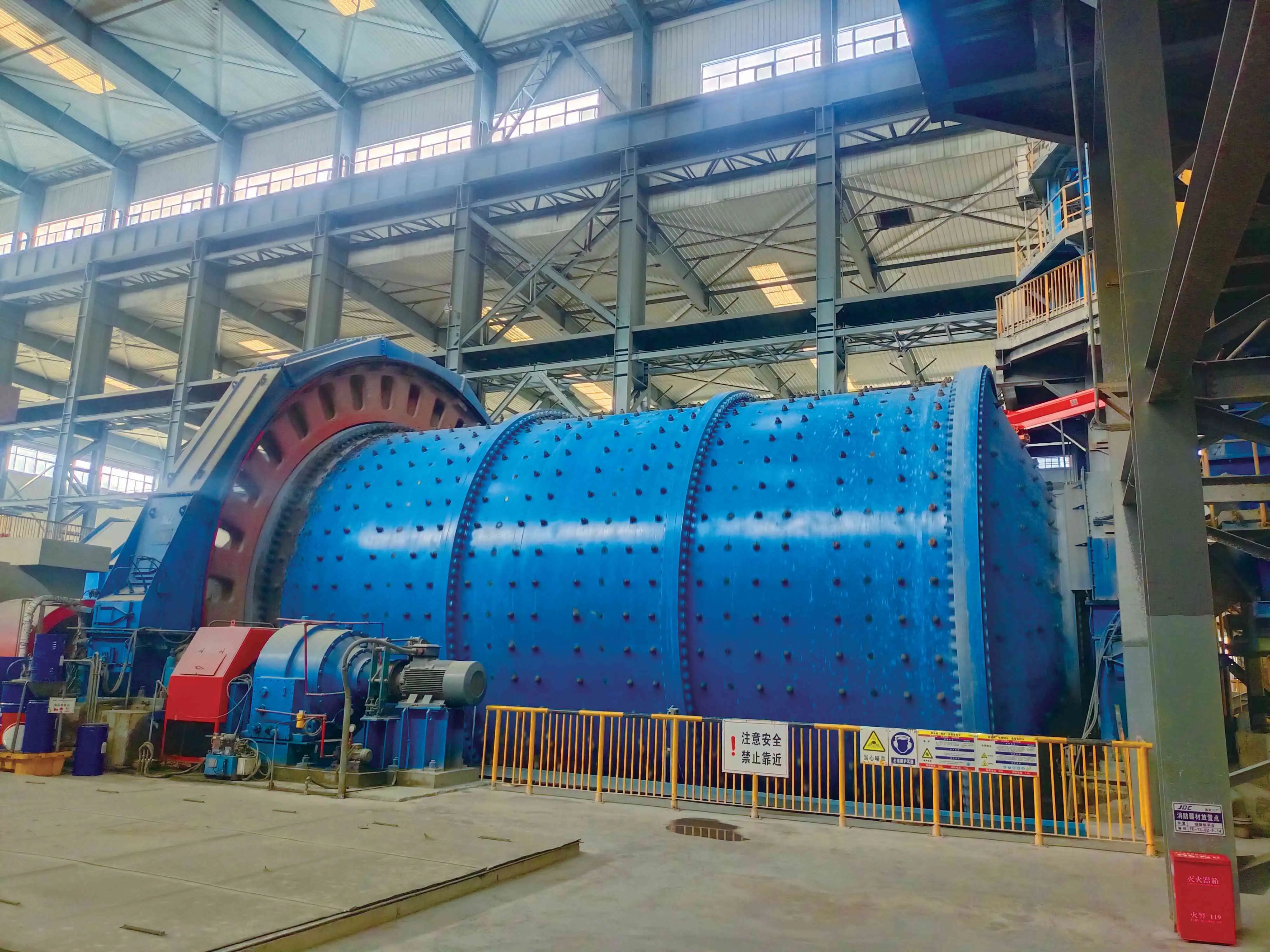Triboelectric charging phenomena in dry grinding systems
Triboelectric charging is a fundamental aspect of dry grinding systems that can significantly influence the grinding process. This phenomenon occurs when two different materials come into contact and then separate, resulting in a transfer of electrons between the surfaces. In the context of ball mill grinding media, this can lead to the accumulation of static charges on both the media and the particles being ground.
The mechanics of triboelectric charging in grinding
During the grinding process, the constant collisions between the grinding media and the material being ground create numerous opportunities for triboelectric charging. The intensity of this charging depends on several factors, including:
- The material properties of both the grinding media and the particles
- The relative velocity of the collisions
- The ambient humidity and temperature
- The surface area of contact between the materials
As the grinding process continues, these charges can accumulate, leading to the formation of electrostatic fields within the grinding chamber. These fields can have both positive and negative effects on the grinding process, depending on the specific conditions and materials involved.
Impact of triboelectric charging on particle behavior
The presence of electrostatic charges can significantly alter the behavior of particles within the grinding system. Some of the effects include:
- Particle agglomeration: Oppositely charged particles may attract each other, forming larger clusters that can hinder further size reduction.
- Particle adhesion: Charged particles may stick to the surfaces of the grinding chamber or media, reducing grinding efficiency.
- Particle separation: In some cases, electrostatic charges can aid in the separation of different materials based on their charging characteristics.
Understanding these effects is crucial for optimizing the grinding process and selecting the most appropriate grinding media for ball mill operations.
Conductive media materials for charge dissipation
To address the challenges posed by triboelectric charging in grinding systems, the use of conductive media materials has become an increasingly popular solution. These materials are designed to dissipate static charges quickly, preventing the build-up of strong electrostatic fields within the grinding chamber.
Types of conductive grinding media
Several types of conductive ball mill grinding media are available for use in electrostatic grinding applications:
- Metal-based media: Including steel, stainless steel, and other metal alloys
- Carbon-infused ceramic media: Ceramic materials with conductive carbon additives
- Polymer-based conductive media: Specialized polymers with conductive properties
Each type of media offers unique advantages and is suited to different grinding applications, depending on factors such as the material being ground, the desired particle size, and the specific requirements of the grinding process.
Benefits of using conductive grinding media
The use of conductive grinding media can offer several benefits in electrostatic grinding processes:
- Reduced particle agglomeration: By dissipating charges quickly, conductive media can help prevent the formation of particle clusters.
- Improved flow characteristics: Minimizing electrostatic attraction between particles can lead to better flowability of the ground material.
- Enhanced grinding efficiency: Preventing particle adhesion to surfaces can result in more effective grinding and reduced wear on equipment.
- Increased safety: Dissipating static charges can reduce the risk of spark generation in potentially explosive environments.
These benefits make conductive grinding media an attractive option for many industrial applications, particularly those involving fine particle production or the processing of materials prone to electrostatic charging.
How media conductivity influences fine particle agglomeration?
The conductivity of grinding media plays a significant role in determining the extent of fine particle agglomeration during the grinding process. This relationship is particularly crucial when dealing with materials that are prone to electrostatic charging or when producing very fine particles.
Mechanisms of fine particle agglomeration
Fine particle agglomeration in grinding systems can occur through several mechanisms:
- Electrostatic attraction: Oppositely charged particles can attract each other, forming larger clusters.
- Van der Waals forces: These weak intermolecular forces become more significant as particle size decreases.
- Liquid bridging: In systems with some moisture content, liquid bridges can form between particles, causing them to stick together.
Among these mechanisms, electrostatic attraction is the one most directly influenced by the conductivity of the grinding media.
Impact of media conductivity on agglomeration
The conductivity of the ball mill grinding media affects particle agglomeration in several ways:
- Charge dissipation rate: Highly conductive media can quickly dissipate static charges, reducing the likelihood of electrostatic agglomeration.
- Charge distribution: Conductive media can help create a more uniform charge distribution within the grinding chamber, minimizing localized areas of high charge concentration.
- Particle-media interactions: The conductivity of the media can influence how particles interact with the media surface, potentially affecting the likelihood of adhesion and agglomeration.
By carefully selecting grinding media with appropriate conductivity characteristics, it's possible to minimize unwanted agglomeration and improve the overall efficiency of the grinding process.
Optimizing media conductivity for specific applications
The ideal conductivity of grinding media can vary depending on the specific application and materials involved. Factors to consider when optimizing media conductivity include:
- Material properties: The electrical properties of the material being ground can influence the optimal media conductivity.
- Desired particle size: Finer particle sizes may require more conductive media to prevent agglomeration.
- Environmental conditions: Humidity and temperature can affect electrostatic charging and may influence the choice of media conductivity.
- Process requirements: Some applications may benefit from a certain degree of controlled agglomeration, necessitating a balance in media conductivity.
By carefully considering these factors, it's possible to select grinding media for ball mill operations that optimize the balance between electrostatic charge control and grinding efficiency.
Conclusion
The conductivity of ball mill grinding media plays a crucial role in electrostatic grinding processes, influencing everything from particle behavior to overall grinding efficiency. By understanding the complex interplay between media conductivity, triboelectric charging, and particle agglomeration, industries can optimize their grinding operations for improved performance and product quality.
As research in this field continues to advance, we can expect to see the development of even more sophisticated grinding media materials and techniques designed to harness the power of electrostatics in particle size reduction processes. This ongoing innovation promises to bring new levels of efficiency and control to industrial grinding applications across a wide range of industries.
For more information on how NINGHU's high-quality grinding media can improve your grinding processes, please don't hesitate to contact us at sales@da-yang.com or sunny@da-yang.com. Our team of experts is ready to help you find the perfect solution for your specific needs.
References
- Smith, J.R. (2022). "Electrostatic Phenomena in Industrial Grinding Processes". Journal of Particle Technology, 45(3), 234-251.
- Johnson, A.B. & Lee, C.D. (2023). "Conductive Grinding Media: Advancements and Applications". Industrial Minerals Review, 18(2), 112-128.
- Zhang, X., et al. (2021). "Triboelectric Charging in Ball Mills: Mechanisms and Mitigation Strategies". Powder Technology, 372, 584-597.
- Brown, M.E. (2022). "The Role of Media Conductivity in Fine Particle Production". Chemical Engineering Science, 215, 115-129.
- Garcia, R.V. & Patel, K.S. (2023). "Optimizing Grinding Media Selection for Electrostatic Applications". Minerals Engineering, 196, 107-118.
- Anderson, L.T. (2021). "Advances in Conductive Ceramic Grinding Media". Ceramics International, 47(8), 10982-10995.









